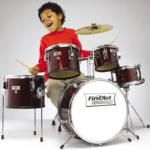The study of voice instruction is called vocal pedagogy. It is the study of what singing is, how singing works, and how proper singing technique is accomplished. In the Western culture, the study of vocal pedagogy began in Ancient Greece where scholars studied the art of singing. However, it isn’t clear if the Greeks actually ever developed a systematic approach to teaching singing. This approach came in the Roman Catholic Church of the 13th century. Monasteries were the center of musical life at that time. In the 15th century, music began to move outside of the church to courts of rich patrons. This became the new center for study of singing and music. In the 17th century, with the development of opera, vocal pedagogy developed into a deeper understanding of the singing process. It has grown even more since then and is an important part of the singing process. Listed below are eight ways to know if you are singing properly.
- You are aware of the human anatomy used to sing.
An understanding and mastery of vocal and physical anatomy are imperative to proper singing. You must know how to use the mouth, jaw, face, tongue, and torso for breathing in order to get the proper sound, and do it in a healthy way. This will allow you to condition the muscles to eventually respond automatically in the situation so that you don’t have to think about breathing, controlling vowels, or allowing for a variety of tones to be produced. If you don’t condition the muscles to do the right thing, it can cause chronic problems with the voice.
- You are breathing from your diaphragm.
Respiration is the process of moving air in and out of the body, or inhalation and exhalation. Breathing when you sing or speak is a controlled process, unlike when you just breathe normally. That is where the diaphragm comes in. It is a muscle in the upper part of your stomach that aides in the singing process. It is one that needs to be conditioned, as was mentioned above. There are many great exercises you can do to strengthen these muscles.
- You use good posture when singing.
Good posture, or good body alignment, makes it easier sing because it takes the tension out of your body. It makes it easier to move air in and out of the body freely and bring in the amount of air that is necessary for singing. Good posture also gives you a greater sense of self-assurance and poise while performing for an audience. This is something that is especially important for younger children when they are singing. Children need to be aware of the ability of the body to be relaxed and that it can be used as an instrument. They also need to be away of their breathing.
- You are producing good vocal sound through phonation.
After you breath in, as you push the air back out, it flows through the vocal folds, which look like trap doors in your throat, and creates a sound. This is phonation. Knowing how to do this in a way that will not cause damage to your vocal folds is very important. This obviously comes back to work with the breathing process.
- You are using good diction.
Articulation is the process of your mouth, tongue, lips, and glottis creating recognizable speech sounds, which results in verbal communication. Those who are serious about singing spend a lot of time studying diction, and how the voice forms vowels and consonants.
- You use overall good vocal health.
This one is very important for younger children as well. Healthy vocalism in a child really means letting them sound like a child and allow them to change gradually as they grow. Lots of children have a breathy sound to their tone that goes away as the larynx and vocal chords grow. Children who sound like adults when they sing have stretched out their vocal chords in an unhealthy way and that can cause permanent damage, such as polyps, nodules, or vocal hemorrhages. A lot of children these days want to sound like their favorite pop or rock star, and trying to imitate them can end badly.
- Know the proper voice classification for you and how to sing each different style of music.
There are several voice classifications: soprano, mezzo-soprano, alto, and contralto for women, and tenor, baritone, and bass for men. Find which range is most comfortable for you and stick with it. Trying to sing outside of your range can do un-repairable damage. Classical training is a good thing, but you sing opera music and folk songs differently then you sing pop and musical theater. Make sure your instructor knows the difference!
- Know how to project your voice.
Vocal resonation is the process by which the basic product of phonation is enhanced as it passes through your body to the outside air. This can also be called amplification, intensification, or prolongation. Work with your voice instructor to know how to move the air properly to give the volume level you wish to achieve.
Singing is a very coordinated act and can be difficult to understand at times. If you are interested in learning more about vocal pedagogy, contact Omaha School of Music and Dance. We will be offering a Vocal Pedagogy class on Tuesday afternoons at 2:00 starting on April 12. OSMD instructor and Doane College Professor Dr. Joshua Zink, who has a D.M.A in Vocal Performance from the University of Nebraska at Lincoln will be instructing this class. Call us to register, or go to our online registration.



